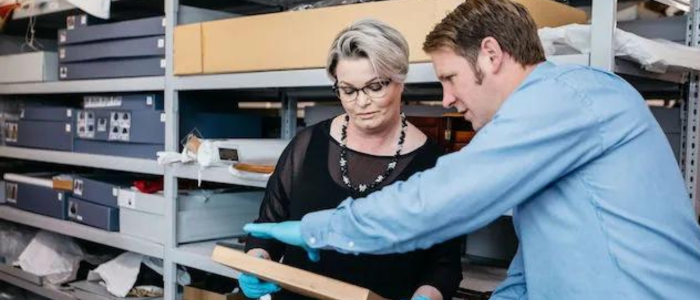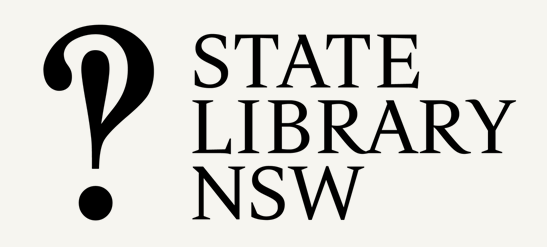In her new role as Senior Director for Library & Archives NT, we invited Tracy Puklowski to share her vision for the library and to reflect upon her 25 years’ experience in the GLAM sector in Australia and New Zealand.
Tell us briefly about your career path
I began my career in the GLAM (galleries, libraries, archives and museums) sector at Archives NZ (then National Archives) in Wellington, NZ, focusing on outreach to make archives more accessible. It was a fantastic role where I had the opportunity to delve into collections for exhibitions and research and tackle the mysteries of archives for various audiences through talks, tours, newsletters and more. Highlights included assisting TIGHAR (The International Group for Historic Aircraft Recovery) in their quest to find evidence of Amelia Earhart and Fred Noonan having survived their crash, as well as writing about the 1955 Air Force files on ‘Flying Saucers’, which included eyewitness drawings! My passion for leadership led me to my first Directorship at Te Awamutu Museum, a small regional museum. I always advise people starting out in their careers to give small places a go; you experience a bit of everything and learn to make great things happen with minimal resources. We delivered incredible events, from wartime recipe re-creations to an enormously successful version of Antiques Roadshow drawing queues that extended around the block. I can advise that wartime ‘orange fudge’ is not something you want to replicate unless you have to! After working at the Museum of New Zealand/Te Papa for a number of years, I took time out in 2012 to work as the Associate Chief Librarian Research Collections at the Turnbull Library (National Library of NZ). It was a fantastic opportunity to think about how different areas of the GLAM sector can learn from one another. I love the unmediated and almost immediate access that research libraries offer to their collections, and I’ve often thought about how museums could integrate similar approaches. My time at Te Papa culminated with my leading the exhibition Gallipoli: The Scale of our War, which has gone on to become the most popular exhibition ever held in New Zealand. After that I become the Director of the National Army Museum of New Zealand/Te Mata Toa. Coming from a family with no history of military service, it was intensely humbling to be the custodian of such precious stories and deeply personal treasures. It was also a privilege to work for the NZDF as a civilian, and to become part of an organizational culture that weaves together Māori and non-Māori values throughout every aspect of its operations. The New Zealand Army – Ngāti Tūmatauenga (Tribe of the War God) – is a recognized Māori tribe. Its marae at Waiouru faces the setting sun, which symbolizes a willingness to go into the dark and the unknown. That was enormously inspiring to me and helped to shape a new vision and focus for the museum. I moved to Australia to become the General Manager Creative Arts and Cultural Services for the City of Launceston, which included leading the Queen Victoria Museum and Art Gallery (QVMAG) and developing the city’s inaugural cultural strategy. From a cold island, I moved to the middle of a desert as Senior Director of the First Nations Gallery of Australia. The opportunity to live and work in Alice Springs was a privilege I’ll never forget, and I believe every Australian should do the same, given the chance. I am now in Darwin, reconnecting with my passion for Archives and Libraries! Call me a GLAM nomad – I firmly believe in non-linear career paths and champion a porous view of working across the sector. We have so much to learn from one another.
What attracted you to work at Library & Archives NT?
My passion for libraries and archives has been present since those early days at the National Archives. It’s always been a strong thread woven throughout my career. The National Army Museum and QVMAG have extensive research libraries and archival collections, and in 2018, I was appointed to the Archives Council of NZ. I care deeply about how I can improve people’s lives through access to information, stories, and knowledge. I love working for organisations that are redefining and reshaping their role in their community. Library & Archives NT is in an exciting phase in this regard. The library is relocating to the Darwin CBD next year, where it will be co-located with Charles Darwin University (CDU). The new premises and spaces will create opportunities to expand our reach and become a destination in itself. I’m excited at the prospect of collaborating with CDU as well. We have also just completed a new Strategic Plan that outlines new ambitions, including our approach to First Nations’ knowledge, agency and voices, as well as a digital strategy. It’s a great time to come on board for these reasons.
What’s the most challenging thing about leading a library in the digital age?
As with every challenge, it’s also an opportunity. We must stop thinking of artificial intelligence (AI) as something to fear. The technology is now accessible to the masses thanks to increased computer power and technical efficiencies. However, the benefits will only be realised when we start actively engaging with AI, creating the data that drives it, and contributing towards developing AI-driven platforms that our audiences want and need. We can’t afford to be passive in this space.
What has been the most difficult or rewarding moment of the past 12 months?
Seeing the National Aboriginal Art Gallery go from strength to strength has been an amazing experience and I can’t wait to the positive artistic, cultural and social outcomes it will deliver for Mparntwe/Alice Springs. In terms of my current role, it’s been great to come on board just as we’re developing our ICIP protocols. These protocols will be a real game-changer for how we approach business, as they will impact everything we do, from providing safe physical spaces, to working collaboratively with First Nations communities to safeguard their histories and stories.
Where do you see your library in five years?
I dream that more people and communities see libraries and archives as trusted partners to help them find information, and as enjoyable and inspiring places to visit. I want us to continue to develop as an employer of talented First Nations information experts, and grow our intellectual leadership in the digital strategy space.
Can you tell us more about your work to promote human rights and social justice within the cultural sector?
In 2011, I was invited to join the Federation of International Human Rights Museums (FIHRM) committee, which was based in the National Museums Liverpool. I have continued to be involved throughout my various roles, but my focus is now on the Federation’s Asia-Pacific branch. My work revolves around sites of memory and conscience, truth-telling, and challenging histories. I see FIHRM’s work as not just being restricted to museums but also recognising libraries and archives as bastions of information, which is at the heart of democracy. It becomes even more meaningful when you think about our significant work in Indigenous data sovereignty and ICIP. I hope all cultural and collecting institutions see themselves as champions of human rights, and I’d love to see National and State Libraries Australia promoting this. I’ve recently returned from the annual FIHRM-AP conference in Taipei, and visiting sites of conscience is sobering. Yet, it’s also inspiring to be reminded of the essential role of memory and voice in helping us face the past and shape the future.
Image source: Tracy Puklowski










